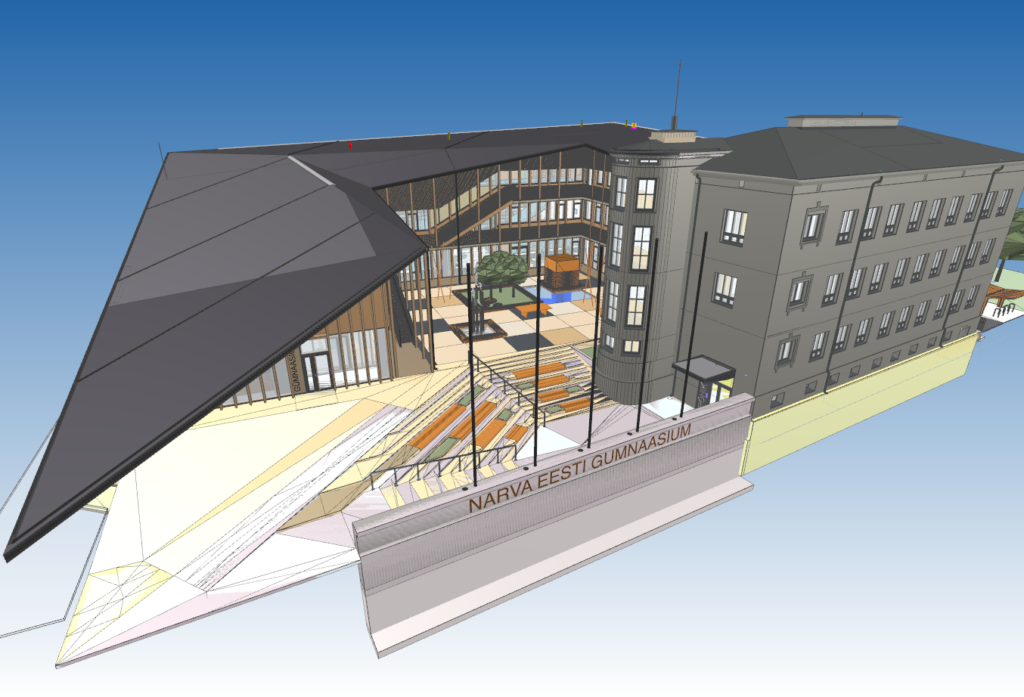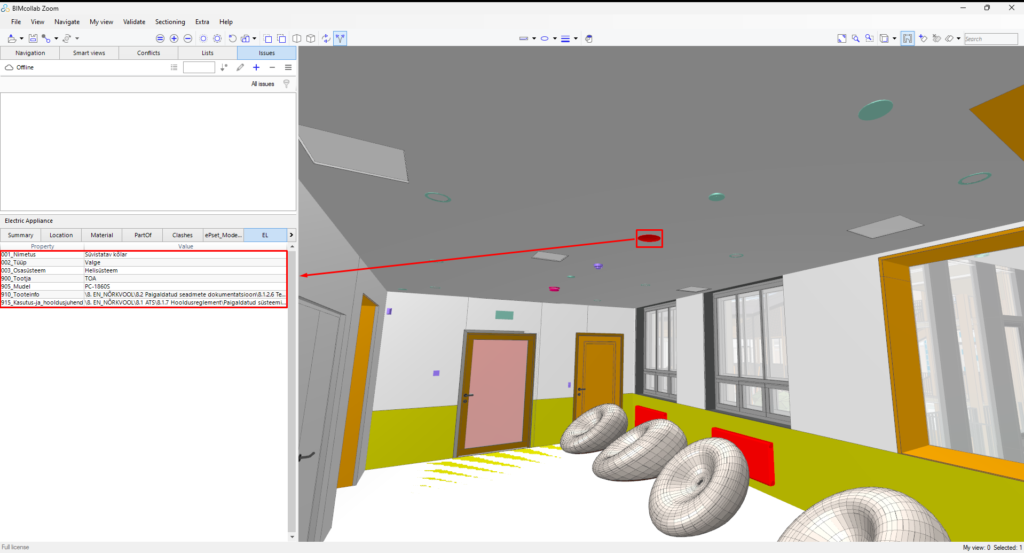The As-Built model: The future of building management or forever untapped potential?
Today, we take a closer look at the as-built model, a concept surrounded by many myths and uncertainties. One thing is sure – it is often underutilized, and even the most knowledgeable clients will discover more benefits than they initially expected.
What is an As-Built Model?
An as-built model, also known as a 3D twin, is a digital representation of a completed building. It encompasses all aspects of the building – technical systems, electricity, architecture, interior design, and more. In other words, it is a digital mirror of the physical building. Every element, whether it’s a ventilation unit, electrical switch, or wall, is represented in the model with all necessary information. For example, if a technical systems maintainer clicks on a ventilation unit in the model, a window opens displaying details about the unit, its manufacturer, model number, and much more technical data.

Narva Estonian School as-built model
Important Points to Know:
- The As-Built Model is Not a Building Management Model: While these terms are often confused, their purposes are different. An as-built model maps the actual state of the building at the end of construction and serves as input for the management model. Often, simplification and optimization are needed to transition it to the management phase. Additionally, for a management model to function, it must be integrated into management software.
- A Point Cloud is Not an As-Built Model: A point cloud is a collection of data points generated, for instance, through laser scanning. Each point in this set represents a specific location on the surface of an object, resulting in a detailed three-dimensional representation. While a point cloud is a valuable input for construction, it is not an as-built model. During as-built model creation, we use the point cloud to compare with the work project and adjust the geometry of the work project to match reality.
- IFC is Not Standardized: Although IFC is widely used for exchanging BIM data, it is not always uniform and standardized. Different software platforms may produce and interpret IFC files differently, leading to data exchange issues. Even if data is readable by humans, machine readability requires very precise standardization.
- Highly Detailed Geometry is Not Always Essential: Sometimes, having accurate and consistent information is more valuable than highly detailed geometry. For example, if a technical systems maintainer can quickly and easily access all necessary information about equipment, it is more practical than a highly detailed visual model. Detail has its place, but economic considerations should also be kept in mind.
- Information from the As-Built Model is Input for the Asset Register
- If you are a building client and are unsure of how and why to use an as-built model, it may be more practical to order a quality work project. A good work project is valuable to both the builder and the client during construction. If the work project is well done, it is already close to an as-built model.
Why is the As-Built Model Not Used in the Management Phase?
- Lack of Knowledge and Skills: Many building managers are not familiar with the capabilities of the as-built model or do not know how to use it. As a result, valuable information often goes unused.
- Lack of Time and Resources: Maintaining and using the model requires time and resources that many organizations are unwilling or unable to allocate. Instead, traditional methods are preferred.
- Integration Issues: Integrating the as-built model into existing systems can be challenging and costly. If the model does not seamlessly integrate with other tools and systems in use, it becomes difficult and expensive to use.
- Lack of Motivation: Without a clear understanding of the benefits and practical advantages of the as-built model, there is no motivation to adopt it.
As-Built Models in Practice
We have created numerous as-built models and concluded that each one is unique. Every project brings its specific challenges and advantages, making it essential to approach each as-built model individually. Recently, we conducted a pilot project with RKAS, testing the integration of an as-built model into their management systems. This project provided valuable insights into deficiencies that need to be addressed in the future but also demonstrated that the modeling world is truly powerful and full of untapped potential.

Reading information from as-built model
In conclusion, the as-built model is an important tool, but its’ use is often limited by lack of knowledge, technical obstacles, and resources. If we can overcome these barriers, the as-built model can significantly simplify building management and help save time and money. We are ready to take building management to the next level – there are no technical barriers to achieving this! If this topic resonates with you or you wish to discuss it further, feel free to get in touch.